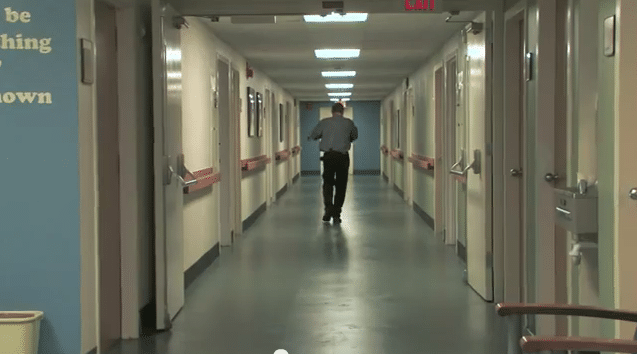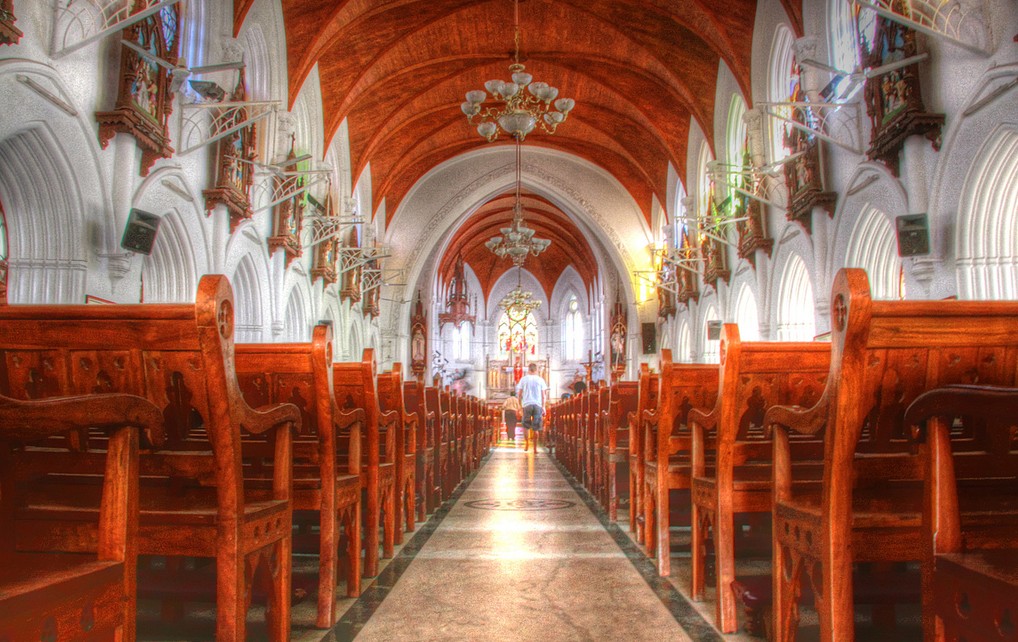
A hospital setting can be frightening for individuals going through or recovering from a difficult psychedelic experience. Image Source: Wikimedia user GoDaddy12.
If you are going through a challenging psychedelic experience or have recently experienced one, you may not feel comfortable in a traditional hospital or clinical setting. You may also be hesitant to seek treatment at a drug treatment center where the focus may be on physical detoxification and complete abstinence from addictive substances. Instead, you’ll want to find a place where people will listen to you sympathetically and fully understand the complexities involved with psychedelic experiences—a sanctuary.
Psychedelic sanctuaries are common at festivals where psychedelic use is traditionally high. These sanctuaries—often ran by organizations such as The Zendo Project—offer a safe, supportive environment for people who are having difficulty while under the influence of psychedelics. But what about people who have challenging psychedelic experiences outside of festivals? Finding a psychedelic therapist you trust can be time consuming and difficult, especially if you are still whirling from an unsettling experience. But one substance abuse treatment facility, The Center For Optimum Living, seeks to change things by creating a permanent psychedelic sanctuary.
When first hearing about this psychedelic sanctuary, I was excited to learn exactly how the facility would be different from other substance abuse clinics and individual therapists currently available. This center could pave the way for other dedicated psychedelic therapy centers in the United States over the next few years and has definitely implemented some of the critical aspects of permanent psychedelic sanctuaries that other clinics or groups of therapists may be interested in following.
Integration As Opposed to Abstinence
Psychedelic sanctuaries are built on the theory of harm reduction, which recognizes that abstinence may not be the best choice for individuals who are currently interested in or using psychedelics for therapeutic purposes. Because most psychedelics are not physically addictive—but can cause mental or emotional dependency—they require a different treatment approach than substances that are physically addictive, such as opioids. While opioids need a physical detoxification period and may require complete abstinence for a healthy life, psychedelic treatment should rely on integration techniques and basic harm reduction.
At clinics where harm reduction is emphasized, abstinence is not a prerequisite for enrollment, nor is it the final objective. The goal is simply to help individuals live their lives happily and have healthy relationships—whether psychedelic use is part of their life or not.
Group vs. Individual Therapy
Group therapy is beneficial for people who have had challenging psychedelic experiences because it allows individuals to discuss their experience with others who may have had similar challenges. This discussion helps patients understand different ways that psychedelic experiences can be interpreted, thus giving them the language and confidence to describe their own experience and start processing it. And if a person is not quite ready to share, group therapy gives them time and motivation for self-reflection.
But while group therapy is often the most beneficial type of psychedelic therapy, there are certain cases when individual therapy is preferred, perhaps to meet a patient’s scheduling needs or to provide more targeted therapy with faster results. And if psychedelic use brought up memories of a traumatic experience, it may be better for an individual to process their trauma individually before pursuing group sessions.
At the moment, most psychedelic therapy uses individual or couples therapy. However, as larger clinics and sanctuaries become more common, therapists will need to be aware of the potential benefits and drawbacks of both group and individual sessions. With careful screening, it is likely that group therapy will help most clients, and alternative treatments such as yoga and meditation should also be explored in a group setting.
Concentrating On Currently Popular Psychedelics
When most people think about psychedelics, they think about the classic psychedelics— LSD, magic mushrooms, and mescaline—but these psychedelics are illegal in most countries. Although they are being studied in therapeutic contexts, therapists cannot advocate their use or help clients find reliable sources for these substances. Because of this, more people are focusing on less well-known psychedelics. Ayahuasca, for instance, is technically a classic psychedelic, but it is still legal and commonly used in several South American countries as well as in the U.S. Similarly, ibogaine is a popular addiction treatment option for people who can travel internationally. For those who are looking for psychedelic therapy without traveling, kambo is the legal substance many people choose. And since marijuana is becoming legal in more areas, it is possible that more people will be forthcoming about seeking help for challenging experiences while using cannabis.
While psychedelic sanctuaries will need to continue offering services for the classic psychedelics and entactogens, it is likely that their primary focus will be on currently legal and accessible substances.
Support for Friends and Family
The final difference between a psychedelic sanctuary and other substance abuse treatment centers is the focus on non-users who may have loved ones who are using psychedelics. The Center for Optimum Living offers regular educational lectures and public forums to discuss psychedelic use, as well as therapy for friends and family members.
After a psychedelic session, an individual may be inspired to make drastic changes in their life. While many changes can be positive—such as quitting smoking or drinking alcohol—some changes can be confusing to friends and family members. During therapy or through community outreach programs, these peripheral people affected by psychedelic use can process their own fears and prejudices and learn ways to communicate any concerns to their loved ones. Most importantly, they can develop effective ways to support friends or family as they integrate their psychedelic experience into their life.
With the attitudes towards psychedelics shifting, it is important to have treatment centers that are dedicated to the treatment of psychedelic users—whether they are currently in psychological distress because of a difficult experience or are having trouble integrating an experience into their life. These treatment centers need to be staffed by healthcare professionals who are trained in the field of psychedelics as opposed to substance abuse prevention. As the medical approach to psychedelics continues to change, so will the needs of psychedelic users. But for now, it is important to meet the needs of people who are seeking answers through psychedelic use in a compassionate, understanding manner. This is accomplished through the formation of psychedelic sanctuaries as well as psychedelic referrals such as those offered by the staff at Psychedelic Times.








